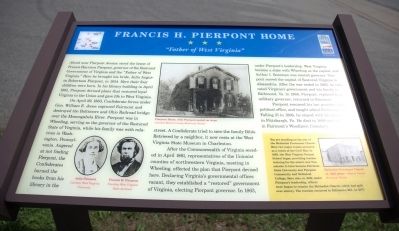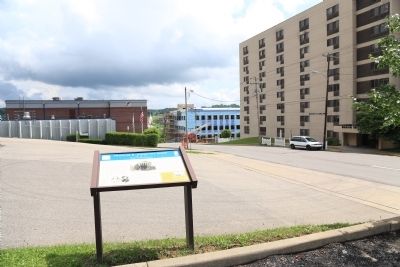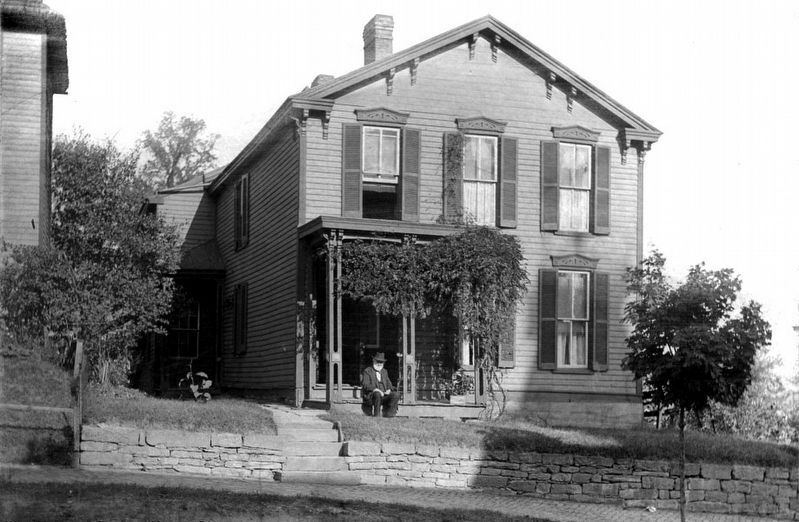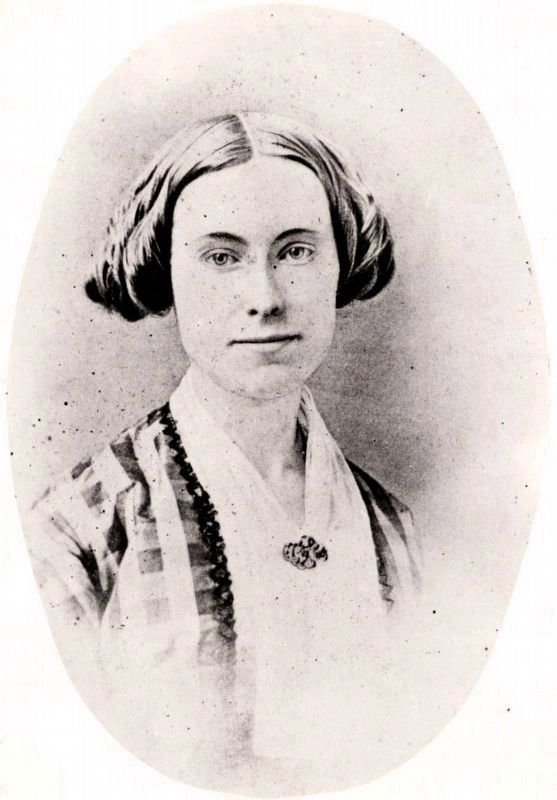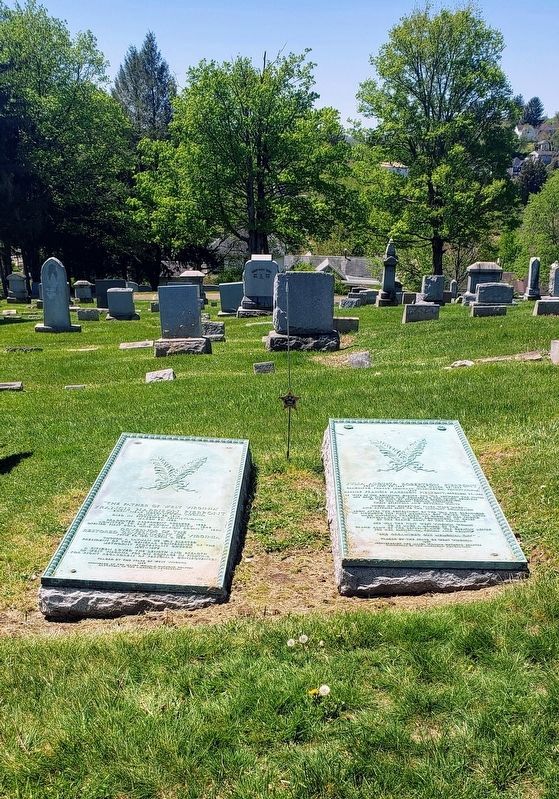Fairmont in Marion County, West Virginia — The American South (Appalachia)
Francis H. Pierpont Home
“Father of West Virginia”
On April 29, 1863, Confederate forces under Gen. William E. Jones captured Fairmont and destroyed the Baltimore and Ohio Railroad bridge over the Monongahela River. Pierpont was in Wheeling, serving as the governor of the Restored State of Virginia, while his family was with relatives in Washington, Pennsylvania. Angered at not finding Pierpont, the Confederates burned the books from his library in the street. A Confederate tried to save the family Bible. Retrieved by a neighbor, it now rests at the West Virginia State Museum in Charleston.
After the Commonwealth of Virginia seceded in April 1861, representatives of the Unionist counties of northwestern Virginia, meeting in Wheeling, effected the plan that Pierpont devised here. Declaring Virginia’s governmental offices vacant, they established a "restored" government of Virginia, electing Pierpont governor. In 1863, under Pierpont’s leadership, West Virginia became a state with Wheeling as the capital, and Arthur I. Boreman was elected governor. Pierpont moved the capital of Restored Virginia to Alexandria. After the war ended in 1865, he relocated Virginia’s government and his family to Richmond, Va. In 1868, Pierpont, replaced by a military governor, returned to Fairmont.
Pierpont resumed his law practice, held political office, and taught school for former slaves. Falling ill in 1896, he stayed with his daughter in Pittsburgh, Pa. He died in 1899 and was buried in Fairmont’s Woodlawn Cemetery.
(sidebar) You are standing on the site of the Methodist Protestant Church. Here two major events occurred as a result of the Civil War. In 1865, the West Virginia Normal School began providing teacher training for the state’s new free schools. It later became Fairmont State University and Pierpont Community and Technical College. Here also, in 1869, under Pierpont’s leadership, efforts were begun to reunite the Methodist Church, which had split over slavery. The reunion occurred in Baltimore Md., in 1877.
Erected by West Virginia Civil War Trails.
Topics and series. This historical marker is listed in these topic lists: Churches & Religion • War, US Civil
. In addition, it is included in the West Virginia Civil War Trails series list. A significant historical month for this entry is April 1861.
Location. 39° 29.193′ N, 80° 8.425′ W. Marker is in Fairmont, West Virginia, in Marion County. Marker is at the intersection of Quincy Street (U.S. 19) and Jackson Street (U.S. 19), on the right when traveling north on Quincy Street. Touch for map. Marker is in this post office area: Fairmont WV 26554, United States of America. Touch for directions.
Other nearby markers. At least 8 other markers are within walking distance of this marker. Alpheus F. Haymond / Thomas S. Haymond (about 600 feet away, measured in a direct line); Veterans Memorial (about 700 feet away); Marion County Veterans (about 700 feet away); Veterans Square (about 700 feet away); a different marker also named Veterans Memorial (approx. 0.2 miles away); Fairmont (approx. 0.2 miles away); Marion County Courthouse (approx. 0.2 miles away); High-Level / Million Dollar Robert H. Mollohan Bridge (approx. 0.2 miles away). Touch for a list and map of all markers in Fairmont.
More about this marker. Above the second column on the marker is a photograph of the “Pierpont House, with Pierpont seated on the steps.” On the lower left are portraits of Julia Pierpont and Francis H. Pierpont. In the sidebar on the lower right is a photograph of the Methodist Protestant Church
circa 1920.
Credits. This page was last revised on December 29, 2023. It was originally submitted on July 3, 2014, by J. J. Prats of Powell, Ohio. This page has been viewed 949 times since then and 36 times this year. Photos: 1, 2. submitted on July 3, 2014, by J. J. Prats of Powell, Ohio. 3. submitted on December 13, 2023, by Allen C. Browne of Silver Spring, Maryland. 4. submitted on October 1, 2016, by Allen C. Browne of Silver Spring, Maryland. 5. submitted on December 11, 2023, by Allen C. Browne of Silver Spring, Maryland. 6. submitted on May 2, 2021, by Bradley Owen of Morgantown, West Virginia.
